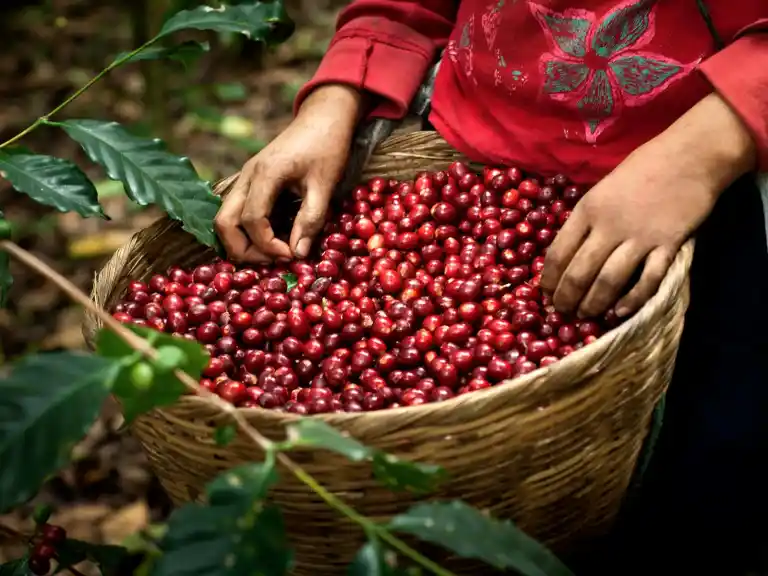We are surrounded by coffee every day, yet how many of us have ever seen, or can even recognize, a coffee cherry?

There are several kinds of coffee, and their fruit sizes vary from variety to variety, but they are generally about the size of a small grape. The fruit’s bulk is derived from its seeds, unlike grapes, although there is a thin layer of flesh under the skin.
As cherries mature, they intensify their colors from green to dark red. When ripe, the skin is usually deep red, though some trees produce yellow fruit, and some trees produce orange fruit when crossing yellow-fruiting with red-fruiting trees. Despite the fact that fruit color is not thought to affect yield, yellow-fruiting trees have been avoided since ripeness can be harder to detect. The red part of the fruit starts out green, goes yellow, and then turns red. The ripeness of coffee can be identified much more easily by hand than by machine.
The sweetness of the fruit is crucial when growing coffee, so ripeness is correlated with sugar content. According to general rules, the more sugar, the better. There are different stages of ripeness at which cherries are harvested by different producers. The theory holds that mixing cherries at different ripeness stages can enhance the taste of coffee, though all cherries should be properly ripe, and none should be overripe since their flavors will become off-putting.

Sweet Fruit
Did you know?
A ripe coffee fruit has a delightful honeydew melon flavor and a refreshing acidity, with an enticing sweetness. Some people squeeze the fruit to make a drink, but even at their ripest they do not seem to be very juicy, and you have to wash them carefully to remove the seeds.

The Seed
In order to grind and brew our coffee, we first remove many of the layers from the seed. A thin layer, referred to as Silverskin, wraps around the seed protecting it from pests and insects.
The seeds of most coffee cherries are positioned across from each other inside the berry. To facilitate development, both sides of each seed are flattened.
Some berries can only contain one seed and produce one kind of berry. This form is known as peaberry. The other side of the piece is flat instead. In terms of the percentage of the crop, these seeds are rounded and represent five percent. People believe that these peaberries have special qualities or that they roast differently than flattened beans and are usually separate from the rest of the crop.

Disclaimer: This content is for informational and educational purposes only.
